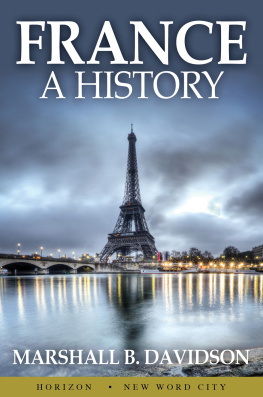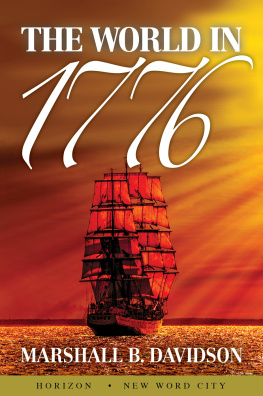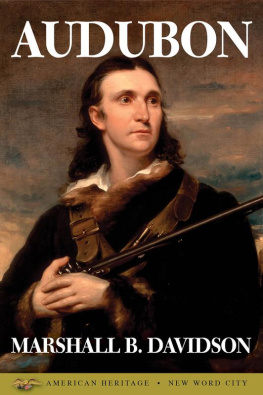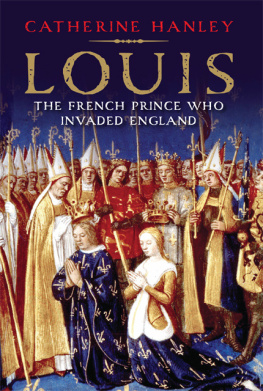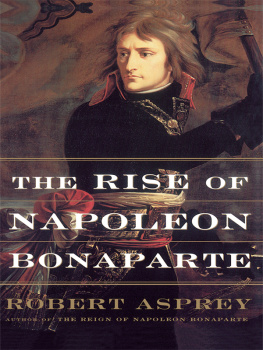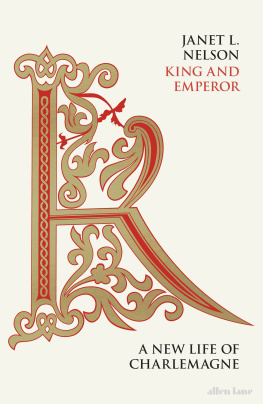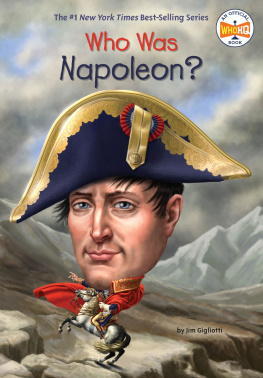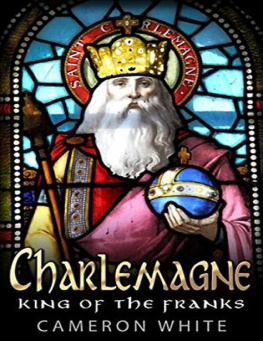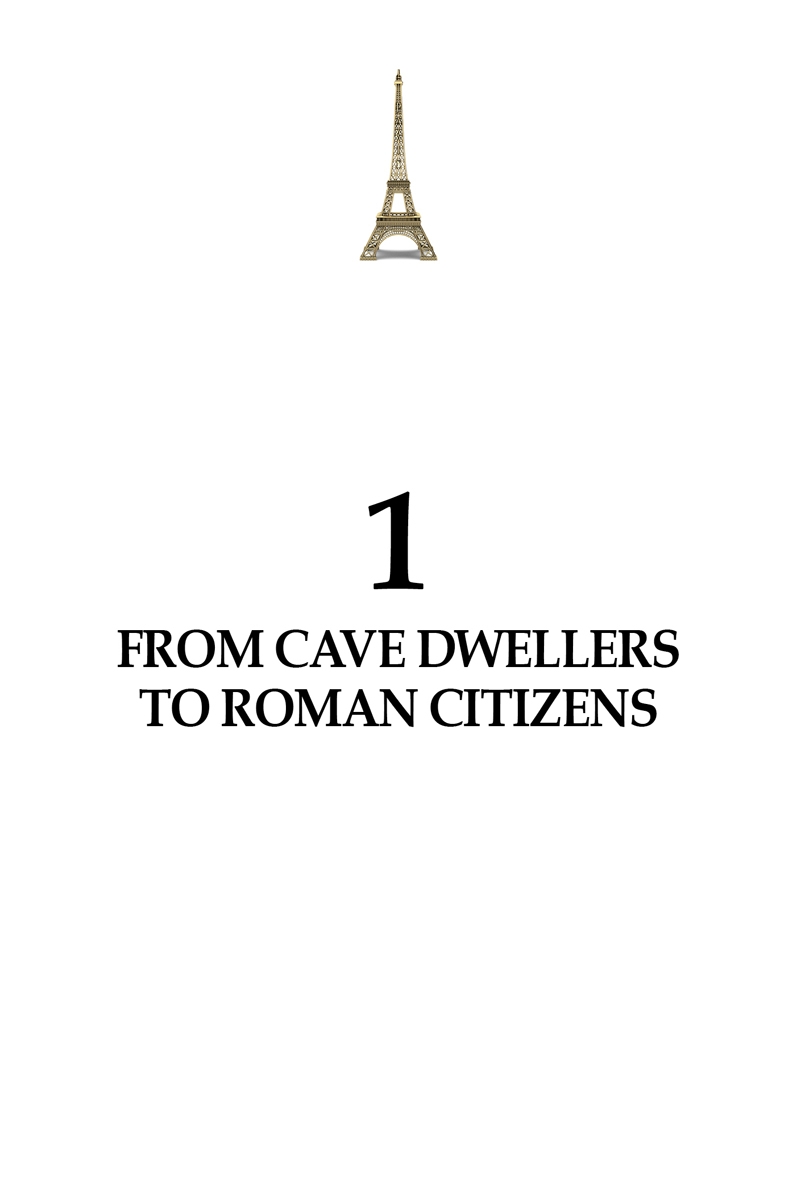France lies about midway between the Arctic Circle and the Equator. It is a temperate and fecund land that for centuries has been tilled and tended with devoted care, down to the margins of its roadsides. Shortly before the birth of Christ, the Greek geographer Strabo wrote that Gaul, the area roughly approximating todays France, seemed designed by nature to accommodate the various needs and wants of humankind. More than 2,000 years later, reviewing the history of the land, we can see how amply that promise has been fulfilled.
Viewed from the air, France resembles an irregular hexagon that is largely a design of nature; five sides of that rough shape are formed by the natural boundaries of sea and mountain. On the eastern and southwestern sides, France is rimmed by the formidable, snowcapped ranges of the Alps and the Pyrenees. Between those two high barriers, the land opens out onto the Mediterranean along an inviting and picturesque coastline that stretches from the frontier of Italy on the east to Spain on the west. The fourth side of the hexagon sweeps in a large arc fronting the Atlantic and extending from the countrys westernmost boundary with Spain to the tip of Brittany, reaching well out into the sea. In the northwest, the coastline of France runs roughly parallel to Englands across the Channel. Finally, on the northern frontier, angling inland to the east and back toward the Alps along the upper Rhine, France touches Belgium and Germany along a man-made - and sensitive - boundary line.
France is not large - less than a fourth the size of its former colony Algeria, somewhat larger than Spain, and as one further measure, considerably smaller than the state of Texas. Within its modest bounds, however, the nation includes a number of distinct regions, each with its own physical character, its separate lore and traditions, and in a few cases, notably Provence, Brittany, and the Basque portion of the Pyrenees, even its own regional language. Those different areas might almost be thought of as countries within a country, and in the past, some were more or less independent dukedoms, princedoms, and kingdoms, occasionally at war with one another and with the anointed king of France until they were finally brought together under a single rule.
Taken as a whole, France displays a greater variety of natural features than virtually any other European country - lush river valleys, wooded hills, fertile plains, marshes, mountains, and varied shore-lands - a fact that has played a significant part in French history. Over the millenniums, before and since Strabos description, those diverse and agreeable aspects of the land have attracted settlers and plunderers, migrants and conquerors, merchants and adventurers from all quarters of the Continent and beyond. Their path was made easier by the rivers leading into the country from every direction that form a web-like pattern of waterways across the land.
Unlike most countries of Europe, France has had the rare advantage of direct outlets both to the ancient world of the Mediterranean, with its storied heritage of wealth and wisdom, and to the modern world that opened on the Atlantic, with its new discoveries and unlimited horizons. And as opportunities beckoned in the course of history, access to either outlook could be quickly found up and down those interlocking rivers. Through such channels also came hordes from the North, hungry for the sun and the warmth, the glamor and treasure of the more civilized Southern worlds. Other peoples moved up from the South along ancient trade routes to traffic in commodities from the North and to linger and settle in the fertile valleys beyond the Alps. In time, the passage of immigrants and visitors made the country a major crossroads of the world, a place where stimulating and civilizing influences from every direction mingled and matured and ultimately endowed the nation with a cultural importance out of proportion to its limited size. Todays French are a composite of the many different strains that have found their way into the country over the centuries.
The story of the French people begins with the story of the emergence in Europe of Homo sapiens during the fourth and last Ice Age. Those sapient men and women, probably migrants from the East, were the first known representatives of the human race, and they gradually replaced the Neanderthals of earlier ages. Like their predecessors, the newcomers were essentially cave dwellers or cave users. They hunted game and gathered food as best they could, but produced nothing themselves. They were, in short, parasites and savages; contemporaries of the mammoth, the wooly rhinoceros, and other creatures now long extinct and contenders with them for existence in what was then a hostile environment. Nevertheless, in their physical and mental potential, they were little different from ourselves. (One branch of the early sapiens, the Cro-Magnons, were athletic, relatively handsome six-footers.) They were unacquainted with metals, but with flint and other tools, they were capable of shaping bone, ivory, amber, and hard stones - as well as more perishable materials - into convincing and suggestive images. And with various pigments, they reproduced the forms of living creatures on the rough walls of their caves for their own unfathomable purposes.
Most likely, the majority of the people who created such figures and designs were professional artists. They were perhaps the first specialists in history, relieved of other duties within the community because of the importance placed upon their particular contributions. (It has even been suggested, somewhat extravagantly, that there may have been primitive academies where they were trained for their special work.) At any rate, their contributions must have served the common purposes of a group, although precisely what those purposes may have been can only be guessed.
We are considering here the Old Stone Age, or as archeologists call it, the Upper Paleolithic period, roughly between 30,000 and 10,000 BCE. This era was long before the birth of ancient Egypt, and it covers a span of years far longer than the duration of Egypts whole dynastic history - ten times longer than the time that separates our own day from the birth of Christ. It was toward the end of that stretch, between about 15,000 and 10,000 BCE, that this early Paleolithic art came to an astonishing climax in the lifelike renderings of wild beasts, humans, and abstract signs - the most notable on cave walls at Lascaux in southwestern France and severable comparable sites.
During those passing centuries, the face of France (and the rest of Europe) was changing. At last, the Ice Age was ending, and as the glaciers melted, the bleak steppes and tundra that had for so long conditioned the life of humans were covered over by forests and other forms of vegetation. Different breeds of animals moved into this new habitat, as did humans of a different culture - again probably migrants from the East - who were equipped to cope with those changing circumstances. The Old Stone Age was dissolving into the New Stone Age; the Paleolithic, through a transitional period, turning into the Neolithic; and the savages of earlier years were being replaced by the barbarians of the succeeding phase. Humans changed from parasites to food producers - herders and farmers - on their way to being civilized.
Several millenniums before Christ, the first known architectural constructions in France were raised, those mysterious, impressive arrangements of giant stone slabs, known as dolmens, cromlechs, and menhirs, that can still be seen at Carnac and other sites on the Brittany peninsula. They are contemporaries and equivalents, presumably, of the carefully engineered constructions at Stonehenge, across the Channel in England. How such huge, heavy stones were quarried, transported, and put in place can hardly be imagined. Some weighed hundreds of tons and one, now fallen, stood seventy feet high. A well-organized group effort was obviously required for their placement, and the resulting structures most likely served some religious purposes. Although only rough shapes, they appear to be everlasting. What fantastic ceremonies attended their installation we may never know. They are Frances earliest standing monuments, rude and distant ancestors of the great Gothic cathedrals that would rise from the landscape more than a score of centuries later.

